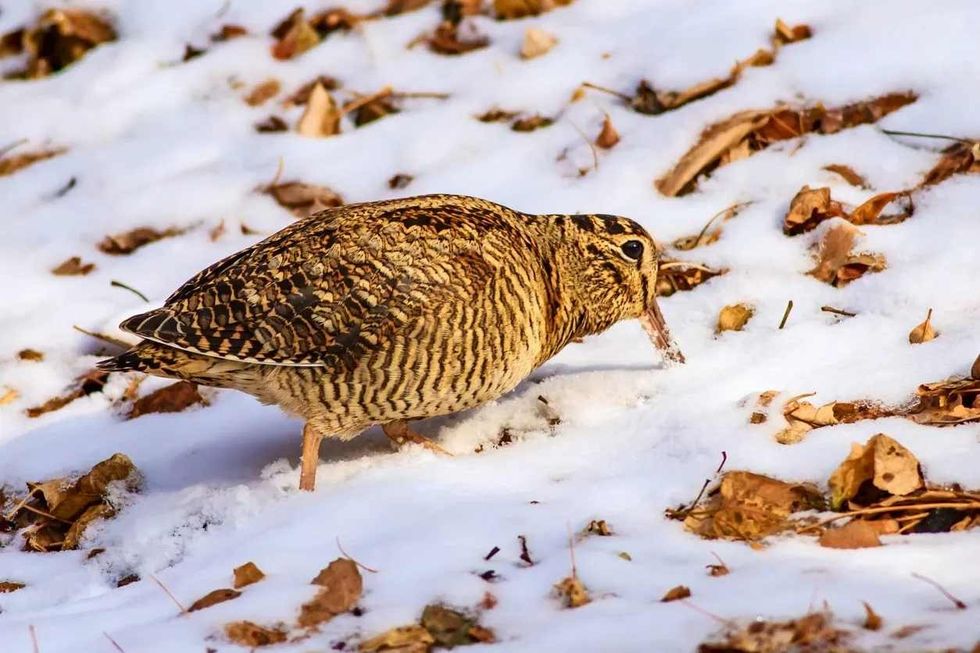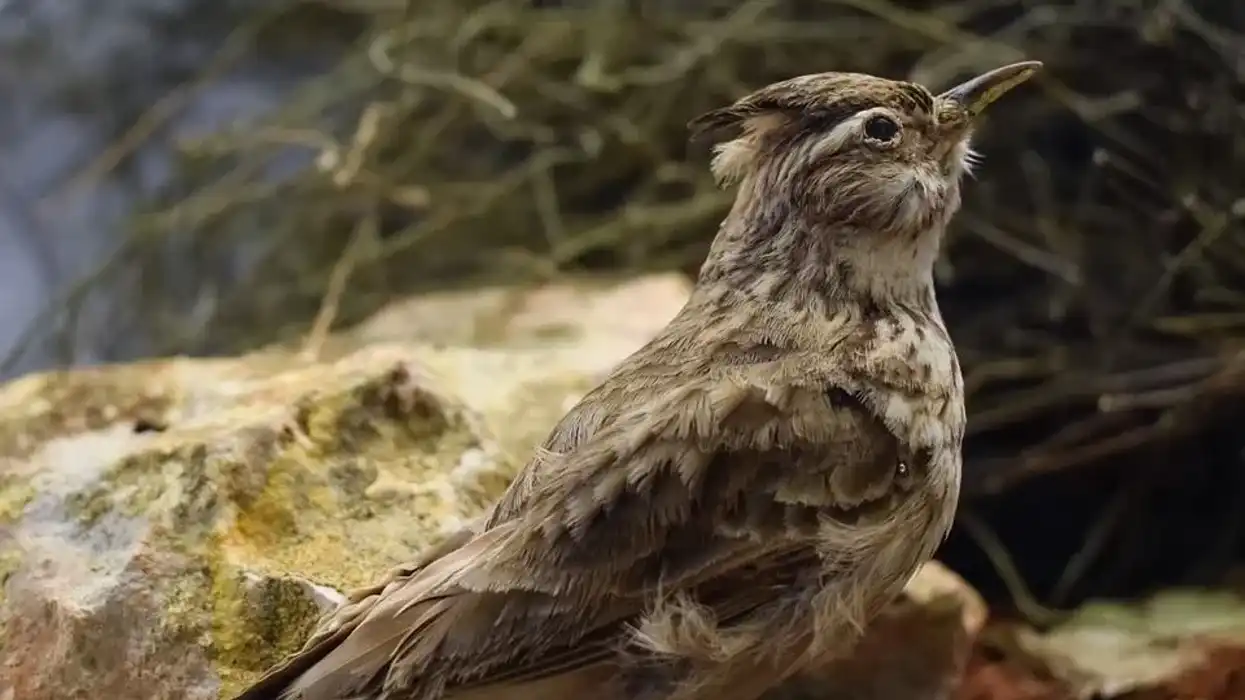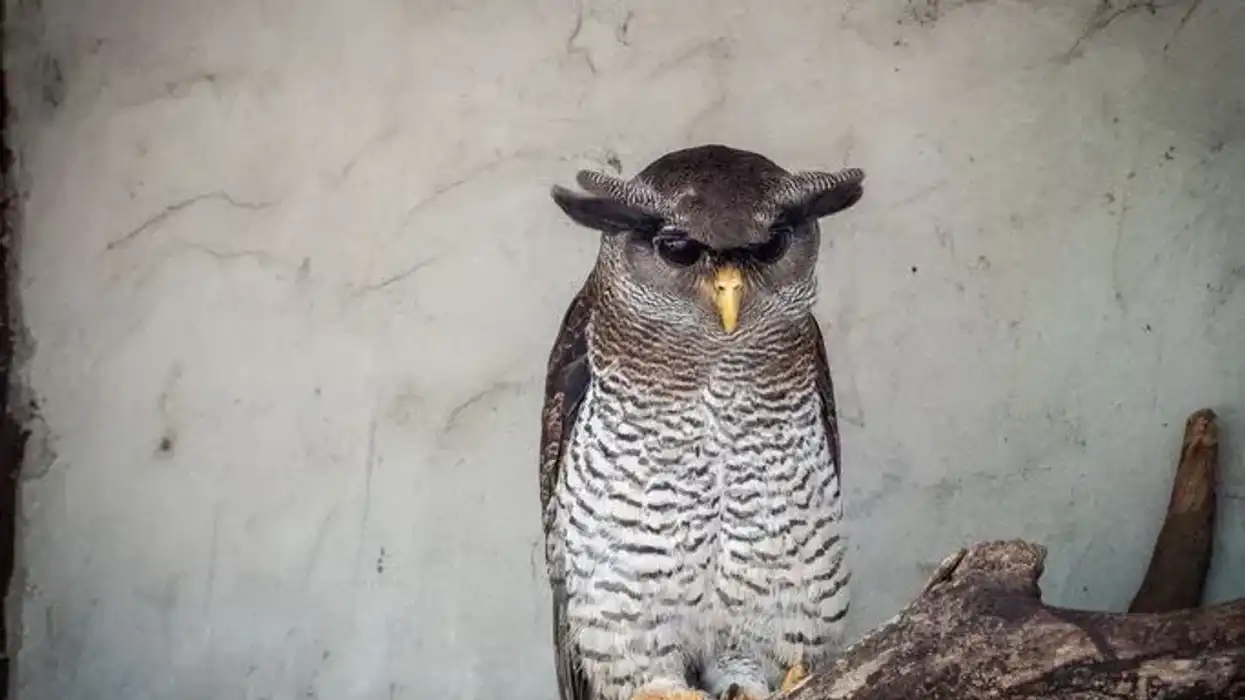The Eurasian woodcock (Scolopax rusticola) is species of bird commonly found in moist forests, sea cliffs, and marshlands. It has dull reddish-brown feathers all over its body and a medium dense plumage, much like an owl.
This woodcock features a well-done camouflage of feathers to blend well into its habitat of the woodlands. It has a wingspan of 22-26 in (55.8-66 cm). Its dense plumage often helps it in camouflaging with the tall heather or trees.
Here, we have many amazing and interesting facts about Eurasian woodcocks that you will enjoy. Let's take a look at these facts and information, and if you enjoy these then, do read our palm warbler and ovenbird facts.
Eurasian Woodcock Interesting Facts
What type of animal is a Eurasian woodcock?
The Eurasian woodcock (Scolopax rusticola) is a species of bird.
What class of animal does a Eurasian woodcock belong to?
Eurasian woodcocks belong to the class Aves. They are a species of bird.
How many Eurasian woodcock are there in the world?
Eurasian woodcock populations are stable. Around 15-16 million of these are alive globally, and they do not face any grave threats and spread across a wide range in Europe. Hence, they are not rare.
Where does a Eurasian woodcock live?
This woodcock lives in woodland, marshes, and seacliffs. It lives in areas that have plenty of food, and they do not face any difficulty in their feeding.
What is a Eurasian woodcock's habitat?
A Eurasian woodcock's habitat includes places like marshes, moist forests, and sea cliffs. Its range is wide, and it comes from the northwest and southern Europe as well as the Atlantic islands. Its habitat is widely spread from Europe to Russia. Nearly 90% of the continent's population of this woodcock is found in Russia and Fennoscandia.
Who do Eurasian woodcock live with?
These birds are solitary animals and usually live alone and even migrate alone. However, this could change due to change in weather or geographical conditions due to which they might prefer to fly in large flocks.
How long does a Eurasian woodcock live?
The Eurasian woodcock has a long lifespan. This bird is expected to have a life expectancy of 10 years. It also depends on conditions such as habitat loss or hunting by humans.
How do they reproduce?
The male initiates a courtship display flight called roding during the breeding season and makes an 'orr-orr-orr-psst' sound during these displays at dusk in spring. These birds usually reach the breeding range between the months of March and May. The breeding population has declined in the United Kingdom in recent years.
The Eurasian woodcock nest is built in shallow depressions in the ground, which is concealed in vegetation or tall heather. They use dead leaves or plant material to line the nest. A female lays four to six eggs per clutch, and eggs are about 1.7 x 1.3 in (44 x 34 mm) in dimension.
The incubation period lasts for 21-24 days. The chick is precocial, meaning that it can move on its own after birth. It fledges in about 15-20 days and cover short distances through flight only after 10 days. The female carries chicks in her claws or on her back if they sense any danger, but this behavior is rarely seen.
What is their conservation status?
The conservation status of Eurasian woodcock is Least Concern. This bird has a large and stable population of about 15-16 million and does not face any threats or danger.
Eurasian Woodcock Fun Facts
What do Eurasian woodcocks look like?
The Eurasian woodcock is a woodland bird that has brown or reddish feathers over its body. The lower body is white or pale in color, while the upper parts are reddish-brown.
It has broad wings and a dense plumage and has three to four broad bars on top of its head on the crown. Many people think that it is a species of duck, but that is not true, as these are species of woodcock birds.
It has a long straight bill, and eyes located high on either side of its head give this bird a 360-degree monocular vision.
The long sensitive bill is flesh-colored with a dark tip. Its legs and feet vary from gray to pinkish in color.

How cute are they?
They are really cute in appearance and are a calm species of birds. Their dense plumage, round body, and quaint head make these birds adorable and soft to the touch.
The eyes on either side of the head are cute too. These birds have a wide range and can be found across Europe. You can find one easily in marshes or seacliffs.
How do they communicate?
When flushed, it usually remains silent but sometimes gives a harsh (and snipe-like) 'schaap' sound. During the breeding season, the male performs a courtship display flight known as roding and inflight.
It performs slow and deliberate-looking wingbeats with its bill facing downwards and makes two to five slow growling or croaking sounds that ascend at a steady rate, and immediately after these sounds, it makes a sneezing note.
The female reacts to this display of flight and sounds by performing a softer sneeze and flying up to a canopy to make 'chhrr' sounding calls. Both birds may also make a muffled and quick 'bibbibbibbibbib' sound during courtship.
How big is a Eurasian woodcock?
They are about 12.9-13.7 in (32.7-354.7 cm) in length and have a wingspan of 22-26 in (55.8-66 cm). They are bigger than their relatives, the common snipe, which is only 9.8-10.6 in (24.8-27 cm) in length, with a wingspan that is shorter than them at about 17.3-18.5 in (44-47 cm).
How fast can a Eurasian woodcock fly?
According to the scientists, these birds complete their spring migration in about six nocturnal nights, with an estimated speed of around 24.2 mph (39 kph). Their speed and flight pattern help them in avoiding hunters and make them a very challenging shot. They also perform slow and deliberate flights during the breeding season at dawn and dusk.
How much does a Eurasian woodcock weigh?
Eurasian woodcocks are light birds and weigh only 0.31-0.92 lb (140.6-417.3 g). Their heavy and dense plumage makes them look like heavy birds, but they are not so heavy. This case is similar to owls, where they too have a dense plumage, making them look big and heavy.
What are the male and female names of the species?
The male and the female of this species of the woodcock birds do not have any specific names. They are very similar in appearance, and you cannot differentiate between them in the wild easily. But a major difference between them is that the male is larger than the female.
What would you call a baby Eurasian woodcock?
A baby Eurasian woodcock is called a chick or hatchling. They are precocial, meaning that they can move on their own right after birth, and they leave the nest immediately. They can cover short-distance flights in 10 days and fledge in about 15-20 days.
What do they eat?
They are omnivores and eat both plants as well as other animals. Their food includes insects and their larvae, spiders, crustaceans, and worms.
Fruits, oats, plant seeds of buttercups, and spurges are also included in their food. This woodcock also uses its long bill to look into damp, soft soil ground for earthworms and also search under the litter of dead leaves on the ground for food. It is seen to be feeding during nighttime.
Are they dangerous?
It is a cute species of bird commonly found in woodland on the northside of Europe. It is a harmless bird and is quite adorable, but you should still maintain distance as it is still a wild animal, and you cannot know about its behavior unless you study it yourself.
Would they make a good pet?
Like other species of woodcock birds, they also do not like human interaction. They like to stay away from humans, so it is not a good idea to keep one as a pet. They are migratory birds, and their spring migration starts in February.
Did you know...
The winter Eurasian woodcock, like other Northern and Asian populations, heads south towards the Indian subcontinent.
They are quite sensitive birds and cannot tolerate very cold weather. Their breeding season starts in April, and during that period, they perform an aerial movement to attract a mate during dawn and dusk for breeding. Its population has decreased in the United Kingdom in recent years.
About 90% of their populations are found in the north, in Europe, and in Russia.
Even though they live in scrublands and marshes, but during freezing weather, they roost in intertidal mud to survive. A report even features woodcock birds as savory in nature.
Eurasian woodcocks are known as 'Bécasse des Bois' in French.
You can identify individual birds by listening carefully to their sounds. You can identify roding males and differentiate them from females, but sometimes it may be difficult as they both make a muffled and quick 'bibbibbibbibbib' sound during courtship.
When flushed or when they sense danger nearby, they start performing zig-zag flights between trees to avoid getting shot down by humans. Females also carry young chicks in their claws or on their back if they sense a predator or any danger near them.
Do woodcocks fly at night?
Woodcocks usually migrate during the daytime, but they also fly at night. They fly at low altitudes of about 50 ft (15.2 m), and at dawn, they rest deep within dense forests and are spotted roosting on trees during daylight hours.
They are solitary birds and migrate alone, but sometimes they might go together in loose flocks and cover around 20-50 mi (32-80.4 km) each night.
Why do woodcocks dance?
Woodcocks make a bobbing movement while searching for food which looks like a dance and is quite funny. Not only is this funny, but it actually helps them in feeding as these movements make earthworms move below ground, as they are disturbed by the heavy steps felt quite deep under the ground.
When they move, this bird learns about their location in the ground, and then they use their long bill to catch and eat them.
Here at Kidadl, we have carefully created lots of interesting family-friendly animal facts for everyone to discover! For more relatable content, check out these ani bird facts and vulture facts for kids pages.
You can even occupy yourself at home by coloring in one of our free printable Eurasian woodcock coloring pages.










